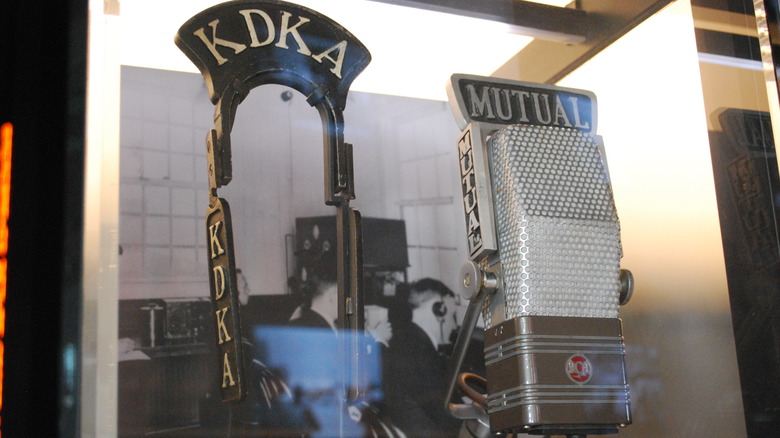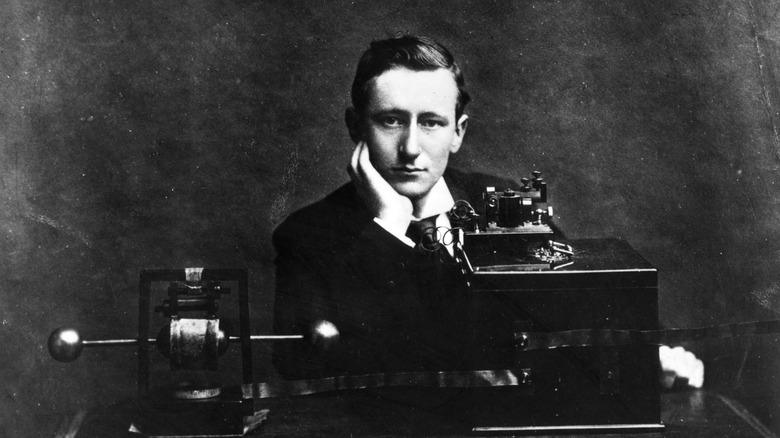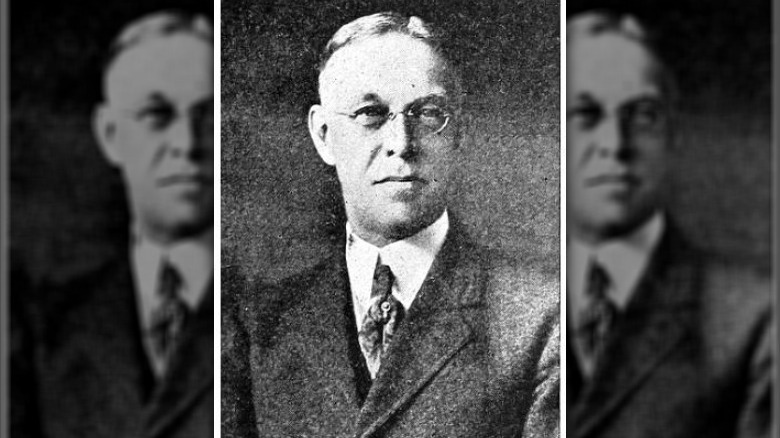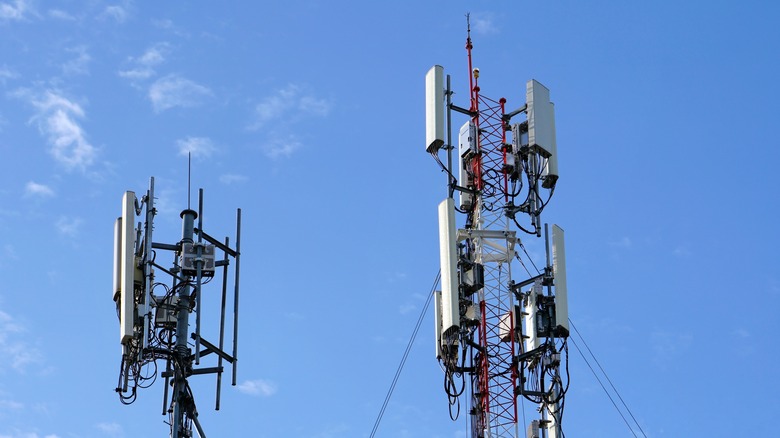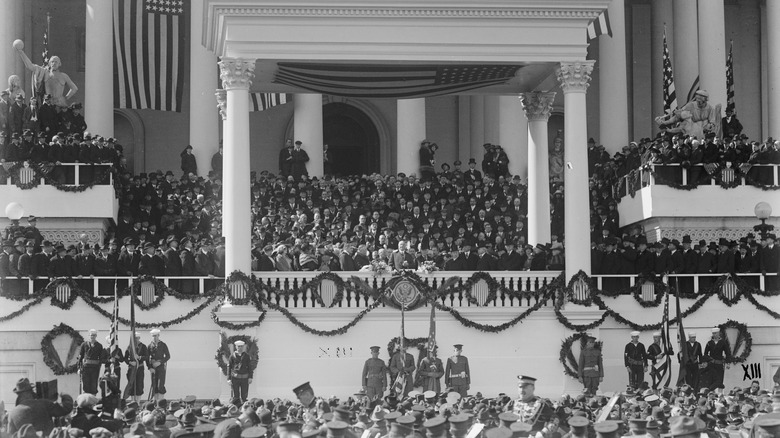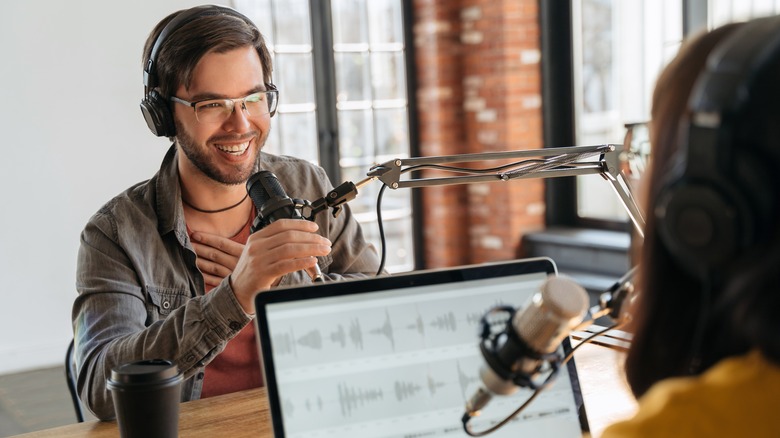The Story Of The World's First Commercial Radio Station
Over the course of human history, many brilliant minds have invented new technologies that have dramatically changed the way we live, and radio is definitely on that list. Radio allowed the transmission of music, voices, and sound thousands of miles away from the broadcasting station. It was a precursor to many of the technologies we use today, like smartphones, which allow people to call anyone anywhere (given that they have service) and have a conversation with said person.
When the radio was first invented, it became an instant success among the public, which allowed private companies to capitalize on this new potential technology. But the first-ever broadcasting radio station was none other than KDKA radio, owned by Westinghouse Electric and Manufacturing Company. This broadcasting station paved the way for all sorts of different entertainment we consume via radio, such as talk shows, radio DJs, sports broadcasts, news updates, political commentary, and much more (via the FCC).
The inventor of radio
Before the radio, there was the telegraph. The telegraph was the first upgrade to mass communication since the printing press and worked by connecting to wires that sent an electrical signal to other telegraphs across the world, often using Morse code messages (created by Samuel Morse, the inventor of the telegraph). After the telegraph's inception, inventors worked on a way to create wireless versions and thus create more accessible communication devices for everyone (via Elon University).
In 1895, this idea came to fruition when an Italian inventor Guglielmo Marconi designed a wireless telegraph after a rivalry with Nikola Tesla. According to Elon University, In 1897, he got a patent from the British government for his invention in 1897. Even with this new machine, there were still other scientists who were looking to strengthen the broadcasting signal to the point where actual voices could be heard, and Canadian scientist Reginald Fessenden did just that. In 1914, Fessenden developed the radio we recognize today, and it was originally used for military application in World War I (per Elon University).
The popularity of radio
The potential for radio was first realized by Westinghouse Electric and Manufacturing Company, a business that focused on transmitting electricity to the public, according to the Library of Congress. Before Westinghouse licensed the first commercial radio station, KDKA, radio was mainly used for two-way communication between two parties (per the Pennsylvania Center for the Book). The vice president of Westinghouse, Harry P. Davis, described radio as "an idea of limitless opportunity," according to "Inventing American Broadcasting 1899-1922."
It all started when an engineer at Westinghouse, Frank Conrad, broadcasted radio sessions from his ham radio in the city of Pittsburgh. He often played music, talked, and broadcast sports scores — much of what we use radio and podcasts for today. Westinghouse saw more potential in this idea, however, and thought that if it could expand the region to which radio operated, more people would tune in. As a result, the Westinghouse company built a small building atop the Pittsburgh warehouse with a 100-watt transmitter and an antenna where it could broadcast. On October 27, 1920, the Department of Commerce granted them the first commercial radio station, KDKA (via the Pennsylvania Center for the Book).
Radio expands
The first-ever commercial radio broadcast on KDKA was on November 2, 1920 (via the Pennsylvania Center for the Book). The station spent the night forecasting the U.S. presidential election between Warren G. Harding and James M. Cox in Ohio. The show was hosted by Leo Rosenburg, who began the broadcast by saying, "This is KDKA of the Westinghouse Electric and Manufacturing Company in East Pittsburgh, Pennsylvania. We shall now broadcast the election returns. We are receiving these returns through the cooperation and by special arrangement with the Pittsburgh Post and Sun. We'd appreciate it if anyone hearing this broadcast would communicate with us as we are very anxious to know how far the broadcast is reaching and how it is being received."
This broadcast excited the entire world, and KDKA exploded in popularity. Eventually, the company upgraded to a 500-watt transmitter, which allowed it to broadcast all the way to Canada and the eastern side of the United States (via the Pennsylvania Center for the Book). The company also started a night show, and by 1922, there were 500 differently licensed commercial radio stations around the country. Needless to say, it was a huge success.
Revolutionizing the world
This development of radio changed the landscape of U.S. politics. On March 4, 1921, KDKA broadcasted the first presidential inaugural address via radio for President Warren Harding. The Kansas City Star described KDKA as a "wireless telephone" (via the Pennsylvania Center for the Books). Other members of government began using KDKA to talk to the American public directly, such as the secretary of commerce and future president of the United States, Herbert Hoover, and congresswoman Alice Robertson. By the time of the next inaugural address, March 4, 1925, nearly 20 different broadcasting stations were streaming the event, according to the FCC.
Only 10 months after its first broadcast, KDKA began delving into sports commentary. On August 5, 1921, the broadcasting station played a show that recollected a baseball game between the Pittsburgh Pirates and the Philadelphia Phillies. Just two months later, KDKA decided to do a live broadcast of a football game between West Virginia University and the University of Pittsburgh.
Living in a changed world
As KDKA and the popularity of radio continued in the United States and across the world, it became clear that this technology would revolutionize our ways of communicating with each other. One KDKA broadcaster, S.H. Kintner, described radio as a movie theater that can be attended from anywhere, encapsulating the communication device's newly found potential (via the Pennsylvania Center for the Book).
But there were even more possibilities with this new technology, and they were realized in a short period of time by other entrepreneurs, inventors, and creative individuals who looked to further capitalize on the technology. By 1930, Galvin Manufacturing Corporation installed the first car radios (via FCC). Only three years later, FM radio was developed to prevent interference and static. When it comes to everything we enjoy while listening to radio or podcasts — such as radio DJs, sports updates, political commentary, news, or entertainment in general — KDKA was there first, and it forever changed our world.
